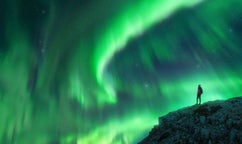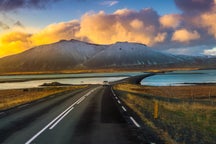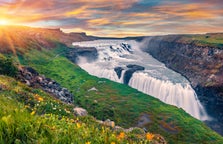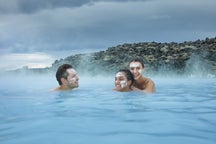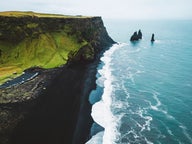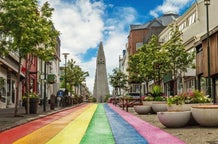
The Evolution of Moroccan Fashion: From Ancient Heritage to Contemporary Trends
Moroccan fashion is an intricate blend of ancient traditions and modern influences, reflecting the country's rich history, diverse cultures, and vibrant spirit. From the bustling markets of Marrakech to the chic streets of Casablanca, Moroccan fashion is just a celebration of color, texture, and craftsmanship. This article delves into the essence of Moroccan fashion, its cultural significance, and how it has evolved in the contemporary world.
The Rich History of Moroccan Fashion
Moroccan fashion has deep roots in the country's history, influenced by a diverse mixture of cultures, including Berber djellaba man , Arab, French, and sub-Saharan African. The fusion of the traditions has given birth to unique clothing styles that incorporate intricate embroidery, luxurious fabrics, and bold, vibrant colors.
One of the most iconic garments in Moroccan fashion could be the djellaba, a loose-fitting robe with a hood. Traditionally worn by both men and women, the djellaba is constructed of wool or cotton and is designed to protect the wearer from the desert heat and cold. The djellaba is often adorned with delicate embroidery, showcasing the wearer's region or tribe. The garment is an embodiment of Morocco's rich heritage, combining practicality with beauty.
Moroccan Textiles: A Feast for the Senses
The textiles found in Moroccan fashion are just as important while the garments themselves. Morocco is noted for its handwoven fabrics, including silk, cotton, and wool, which are generally dyed using natural techniques handed down through generations. Moroccan rugs and carpets, like the famous Beni Ourain rugs, are renowned because of their quality and intricate patterns, and these influences often make their way into fashion designs.
One of the most notable facets of Moroccan textiles is their bold utilization of color.Rich reds, oranges, and yellows evoke the vibrancy of Moroccan landscapes, while deep blues and greens represent the Mediterranean and desert influences. Moroccan prints, such as geometric patterns and floral motifs, are commonly incorporated into clothing, offering a visible feast that tells the story of the country's diverse landscape and people.
Traditional vs. Contemporary Moroccan Fashion
While traditional garments like the djellaba and caftan remain staples of Moroccan fashion, modern designers are increasingly integrating these classic pieces with contemporary elements. Recently, Moroccan fashion has seen a mix of traditional craftsmanship with global fashion trends, developing a unique style that interests both local and international audiences.
Contemporary Moroccan designers like Fadila El Gadi and Aswat have become internationally recognized because of their innovative designs that celebrate Moroccan heritage while incorporating modern fabrics, cuts, and silhouettes. These designers blend the old and new, creating garments that honor traditional craftsmanship while attractive to today's fashion-conscious consumers.
Moroccan Fashion in the Global Spotlight
Moroccan fashion has also made its mark on the global stage. The country's unique styles are often seen on international catwalks, and Moroccan-inspired fashion has become a symbol of elegance, craftsmanship, and cultural pride. Moroccan caftans, noted for their luxurious fabrics and intricate beadwork, are often worn at high-profile events, including weddings red and carpets. The designs, which feature long flowing sleeves, deep V-necklines, and vibrant embroidery, are admired because of their femininity and timeless beauty.
Moreover, Moroccan fashion has influenced haute couture and ready-to-wear collections from famous designers across the world. The fusion of Boho chic, tribal patterns, and vibrant colors has become a global fashion trend, with Moroccan-inspired styles making waves in both streetwear and luxury fashion.
The Role of Fashion in Moroccan Society
In Morocco, fashion is not only about aesthetics but in addition about social identity. Garments often reflect regional or tribal affiliations, with distinct styles, colors, and patterns representing different areas of the country. Like, Berber women are noted for their intricate embroidery and jewelry, which are handed down from generation to generation. Similarly, the Moroccan kaftan is just a symbol of femininity and elegance, often worn during special events like weddings and religious celebrations.
Fashion in Morocco can also be deeply connected to the thought of modesty, particularly for women. Traditional Moroccan attire, like the djellaba and caftan, provides coverage while still allowing the wearer to state individuality through details like embroidery and jewelry. The interplay between modesty and style reflects the country's cultural values and how fashion is an expression of personal identity within the context of tradition.
Conclusion
Moroccan fashion is just a beautiful fusion of history, culture, and innovation. From traditional garments like the djellaba and caftan to the contemporary designs emerging from local ateliers, Moroccan fashion tells the story of a country that values both its heritage and its future. As the planet becomes increasingly globalized, Moroccan fashion continues to captivate audiences around the globe using its vibrant colors, intricate designs, and timeless elegance.
Other interesting blogs
Chasing Waterfalls in Iceland
Iceland is spectacular in so many ways and Icelandic nature is quite unique with its vast landscape, volcanic activity, geothermal areas, glacier lagoons and sceneries, black sand beaches and spectRead moreSænautasel Turf House in the Highland of Iceland
In my search for turf houses around Iceland, I visited Sænautasel, which is a rebuilt turf house on Jökuldalsheiði heath in the highland of Iceland. It is, in my opinion, an extremely cute turf hoRead moreLupines in Iceland: Beauty, Controversy, and Environmental Impact
Iceland’s striking landscapes are known for their stark beauty—volcanic deserts, lava fields, glaciers, and black sand beaches. Among these natural wonders, visitors in summer may notice vast fieldsRead more

Download Iceland’s biggest travel marketplace to your phone to manage your entire trip in one place
Scan this QR code with your phone camera and press the link that appears to add Iceland’s biggest travel marketplace into your pocket. Enter your phone number or email address to receive an SMS or email with the download link.










